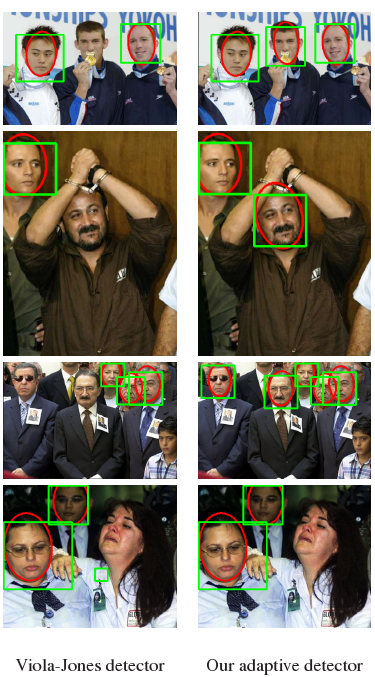Face Detection
Overview
Many classifiers are trained with massive training sets only to be applied at test time on data from a different distribution. How can we rapidly and simply adapt a classifier to a new test distribution, even when we do not have access to the original training data? We present an on-line approach for rapidly adapting a black box classifier to a new test data set without retraining the classifier or examining the original optimization criterion. Assuming the original classifier outputs a continuous number for which a threshold gives the class, we reclassify points near the original boundary using a Gaussian process regression scheme. We show how this general procedure can be used in the context of a classifier cascade, demonstrating performance that far exceeds state-of-the-art results in face detection on a standard data set.
In the figure below, let f (x) denote the output of a classifier on a data point x. Consider an ε margin (green dotted line) around the classification boundary (black solid line). For points lying in the margin the classifier is not very certain about the predictive label. The proposed method updates the scores for the points in this margin based on their similarity to the other points for which the classifier is relatively more confident about the classification label. The original classification output is shown using 'blue +', whereas the updated output is shown using 'red o'.


Faculty
Graduate Students
References
- Vidit Jain and Erik Learned-Miller.
Online Domain-Adaptation of a Pre-Trained Cascade of Classifiers.
To Appear at IEEE Conference on Computer Vision and Pattern Recognition (CVPR), 2011.
[pdf]
